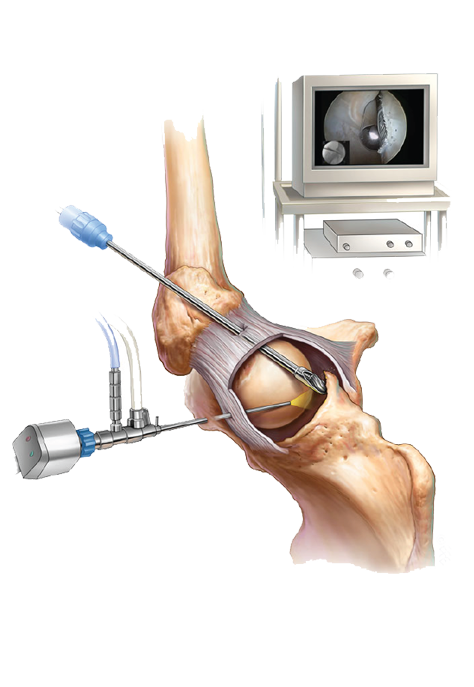Arthroscopic Surgery
Arthroscopic Surgery
Arthroscopy is a surgical procedure orthopaedic surgeons use to visualize, diagnose, and treat problems inside a joint. Arthroscopic surgery usually results in less joint pain and stiffness than open surgery. Recovery also generally takes less time.
The word arthroscopy comes from two Greek words, "arthro" (joint) and "skopein" (to look). The term literally means "to look within the joint.
Types of Arthroscopy Surgery
- Knee
- Hip
- Shoulder
- Wrist
- Spine
- Temporomandibular joint
Why is arthroscopy necessary?
Diagnosing joint injuries and disease begins with a thorough medical history, physical examination, and usually X-rays. Additional tests such as magnetic resonance imaging (MRI) or computed tomography (CT) also scan may be needed.
Through the arthroscope, a final diagnosis is made, which may be more accurate than through "open" surgery or from X-ray studies.
Disease and injuries can damage bones, cartilage, ligaments, muscles, and tendons. Some of the most frequent conditions found during arthroscopic examinations of joints are:
Inflammation
For example, synovitis is an inflammation of the lining in the knee, shoulder, elbow, wrist, or ankle.
Acute or Chronic Injury
- Shoulder: Rotator cuff tendon tears, impingement syndrome, and recurrent dislocations
- Knee: Meniscal (cartilage) tears, chondromalacia (wearing or injury of cartilage cushion), and anterior cruciate ligament tears with instability
- Wrist: Carpal tunnel syndrome
- Loose bodies of bone and/or cartilage: for example, knee, shoulder, elbow, ankle, or wrist
Some problems associated with arthritis also can be treated. Several procedures may combine arthroscopic and standard surgery.
- Rotator cuff surgery
- Repair or resection of torn cartilage (meniscus) from knee or shoulder
- Reconstruction of anterior cruciate ligament in knee
- Removal of inflamed lining (synovium) in knee, shoulder, elbow, wrist, ankle
- Release of carpal tunnel
- Repair of torn ligaments
- Removal of loose bone or cartilage in knee, shoulder, elbow, ankle, wrist

Although the inside of nearly all joints can be viewed with an arthroscope, six joints are most frequently examined with this instrument. These include the knee, shoulder, elbow, ankle, hip, and wrist. As advances are made in fiberoptic technology and new techniques are developed by orthopaedic surgeons, other joints may be treated more frequently in the future
Is arthroscopic surgery a major surgery?
Arthroscopic surgery has gone from being an advantage of less invasive surgery to the standard of care for many types of joint surgery. Most commonly performed on the knee and the shoulder, arthroscopic surgery can also be performed on just about any other joint in the body
Dr. Abhishek Bansal
 +91-9142424264
+91-9142424264 Book an Appointment
Book an Appointment